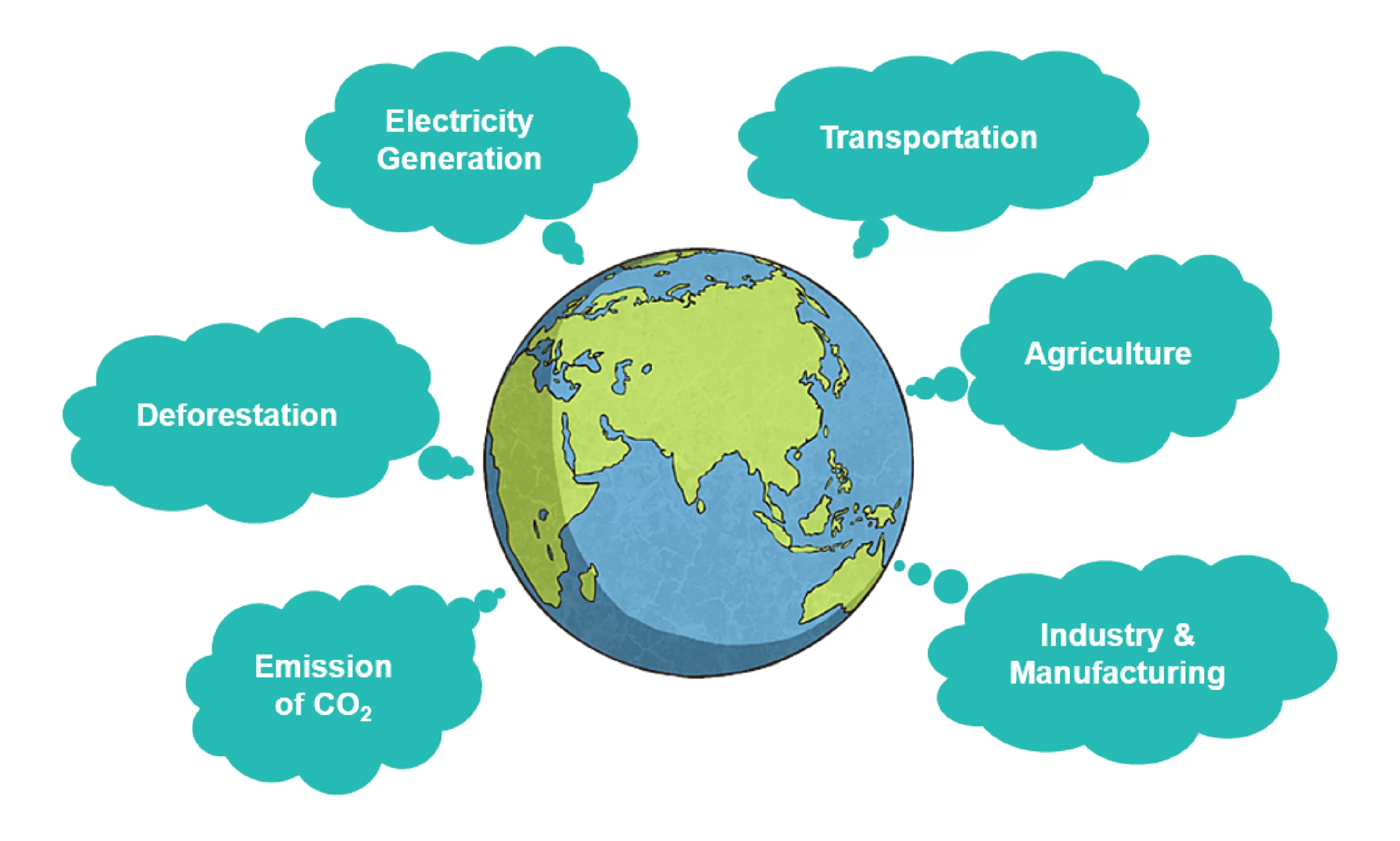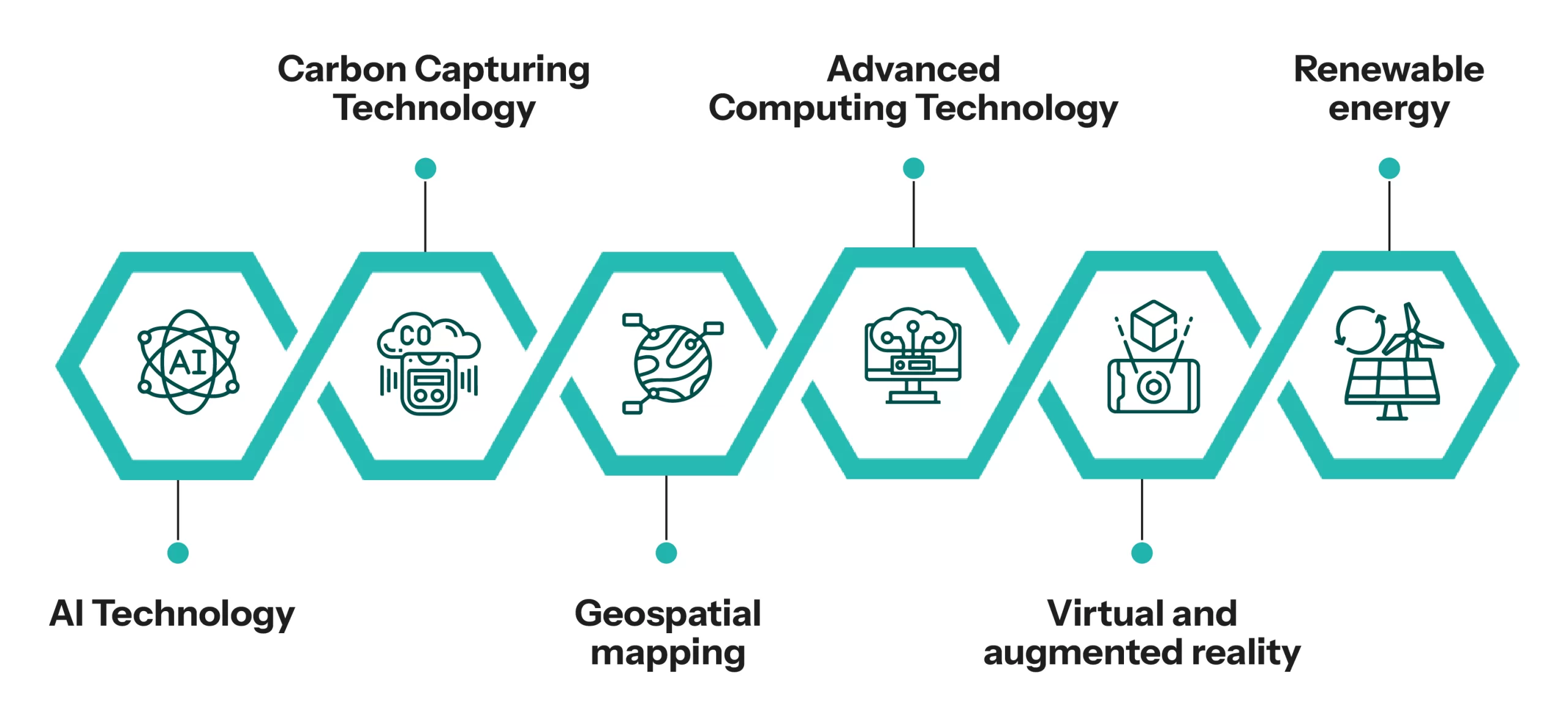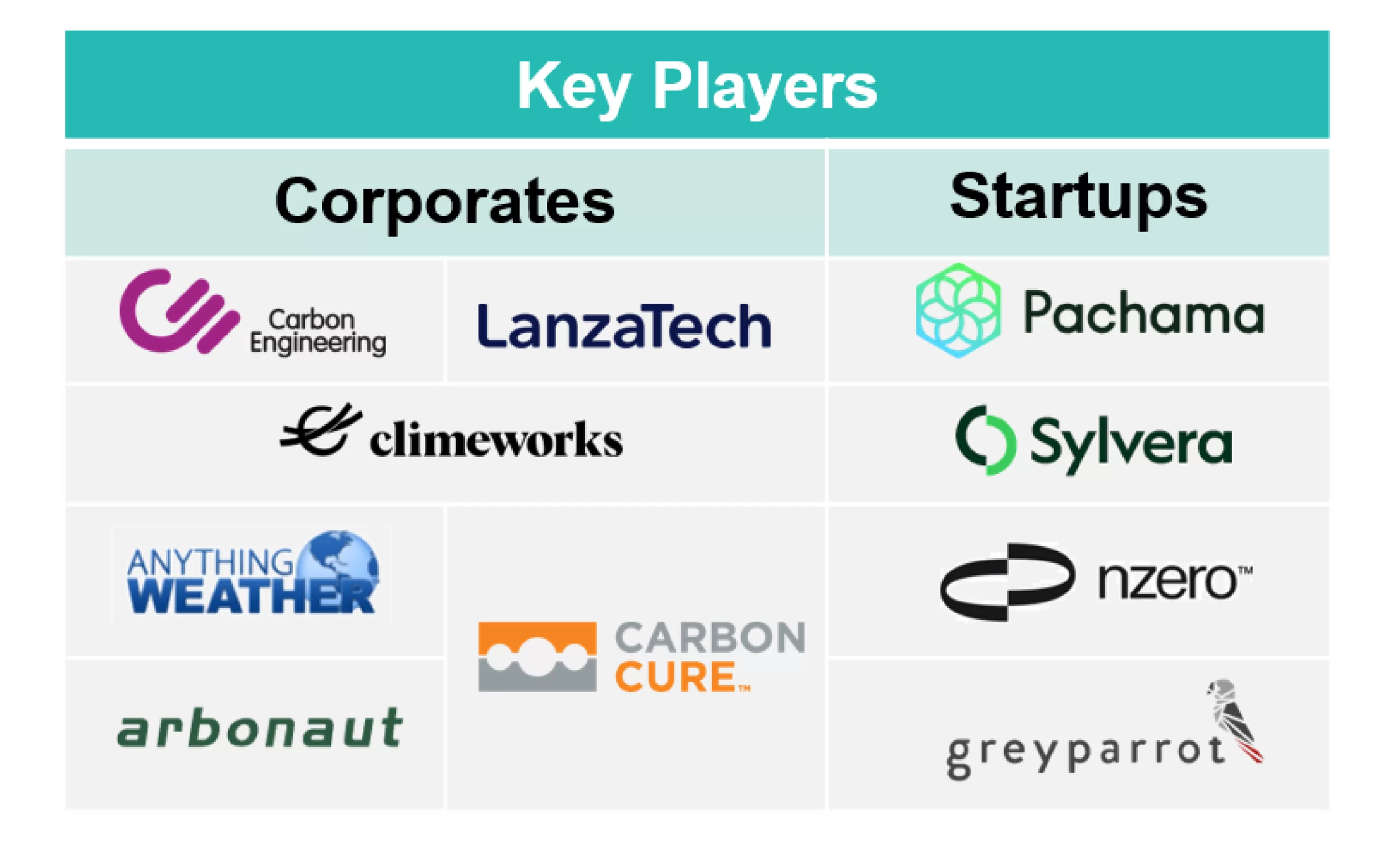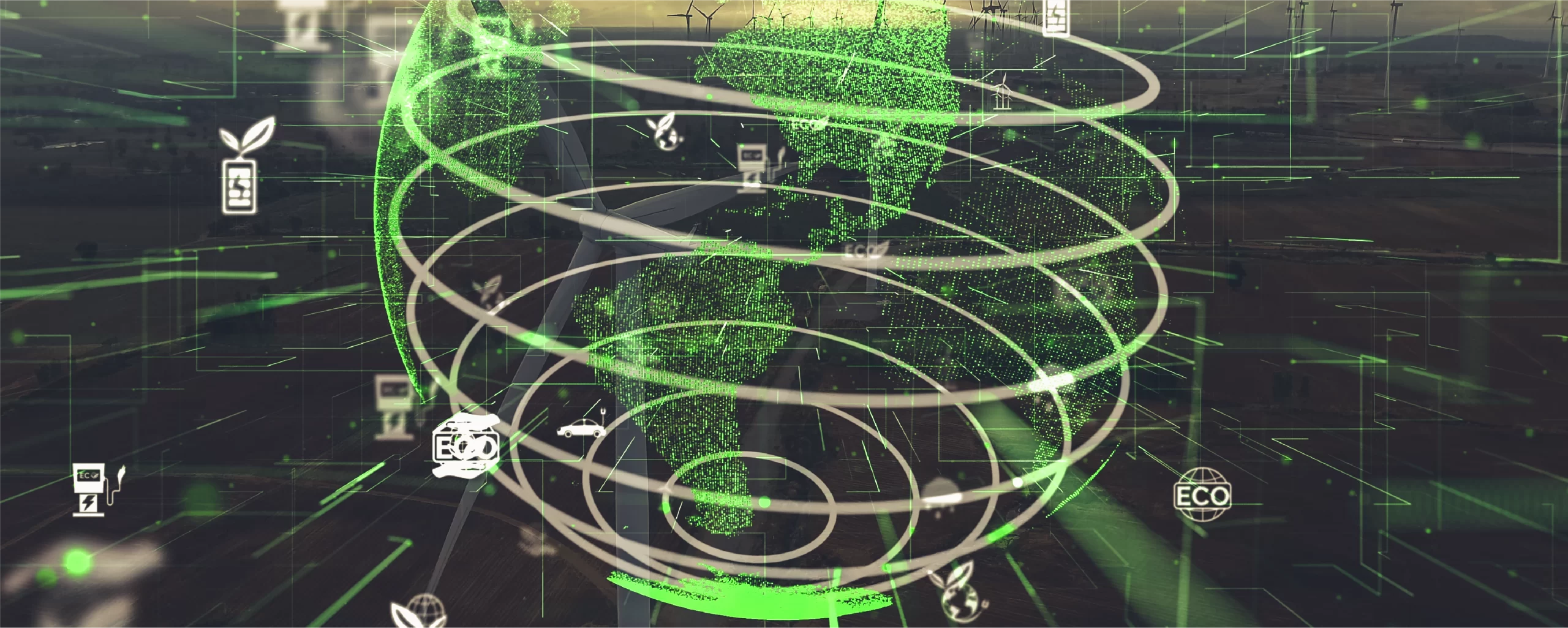The Role of Technology in Countering Climate Change
Technology plays a crucial role in providing innovative solutions to combat climate change, paving the way for a more sustainable future by integrating natural processes with technological advancements. These innovations are helping to reduce the effects of climate change and accelerate the shift to a low-carbon economy. Deep technology development leaves no room for doubt that it is critical in monitoring and analyzing the emission of greenhouse gases and shaping policies aimed at effective mitigation and adaptation to climate change. Additionally, technology helps establish the direction for improvements and encourages better practices.
Developing a clear understanding of environmental problems will enable the use of cleaner resources, ultimately improving the well-being of the planet for generations to come. Encouraging clean energy via energy-smart grids and advanced energy storage will further reduce wastage as well as emissions. Now, radical innovations in the transportation sphere, such as electric car manufacturing and improvements to urban transport infrastructure, are creating new opportunities for reducing transport emissions.
Causes of Climate Change
Climate change comprises a broad spectrum of environmental degradation as well as persistent changes in temperature and climatic patterns. Some of them are listed below:

These climatic changes may occur due to human activities or natural processes. The major contribution of climatic changes arises from the combustion of fossil fuels such as coal, oil, and natural gas, resulting in the emission of greenhouse gases. Such emissions are comparable to a blanket that encircles the planet: they trap heat from the sun, which causes global warming. Deforestation is another significant factor contributing to climate change, as trees play a crucial role in sequestering CO2. Cutting down trees makes this gas available to the Earth’s atmosphere more rapidly. To alleviate these issues, it is necessary to transition to more sustainable energy sources and practices.
Technology has been a key driver of economic progress throughout history, and today, it holds the potential to combat climate change by integrating with nature. Solutions like advanced early warning systems and hybrid approaches can help mitigate climate risks, offering more reliable and cost-effective strategies to address challenges like storm surges and rising sea levels. Some technologies:

Figure 2: Technologies to Combat Climate Change
Geospatial Mapping Technology in Combating Climate Change
Geospatial mapping technology is a powerful tool in the fight against climate change, as it integrates data from sensors, satellites, and technologies such as GIS and UAVs to monitor the Earth’s surface. Below are some examples of geospatial mapping applications in climate change reduction:

Monitoring Environmental Changes: Remote sensing satellites monitor vegetation, water bodies, land use, and climate variables, including temperature and sea level rise.
Carbon Management: It evaluates carbon sequestration, forest health, and identifies suitable locations for afforestation and reforestation.
Renewable Energy: Geospatial technology supports the transition to renewable energy by analyzing spatial data on sunlight, wind, and water flow to identify ideal locations for solar panels, wind turbines, and hydroelectric plants.
Flood Management: Flood maps are created using elevation data to inform evacuation planning and flood prevention efforts.
Infrastructure Resilience: Geospatial data helps policymakers prioritise upgrades and develop early warning systems by identifying areas vulnerable to extreme weather.
Challenges and Considerations
Despite their usefulness in combating climate change, GIS techniques have limitations. Decision-making is hindered in areas most affected by climate change because developing nations often lack the necessary infrastructure and resources to access high-quality geospatial data. Integrating geospatial data with other environmental datasets is challenging due to the complexity and resource needs of combining various sources.
Policymakers, stakeholders, and scientists must collaborate to address these issues. Stakeholders offer insightful local viewpoints, legislators convert these viewpoints into workable policies, and scientists impart their knowledge of data analysis. By promoting open dialogue and cooperation, we can increase the effectiveness of geospatial technologies in combating climate change.
Solution Providers

Pachama has developed the first AI-based solution that utilizes satellite data and machine learning models to measure baselines dynamically. It monitors the real-world effects of a carbon project and tracks changes in forest areas surrounding it using satellite imagery and cloud-penetrating radar.
nZero’s carbon management and accounting platform enables businesses to monitor, track, and manage their carbon emissions. It utilizes AI and machine learning technology that employs advanced algorithms to collect diverse data, providing predictive analysis to businesses.
Carbon Engineering has developed a technology that captures carbon dioxide, the primary greenhouse gas responsible for climate change. Their solution can address the significant amounts of CO2 emitted in the past that are still trapped in our atmosphere.
Recent Collaborations
- IBM is working with Mohamed Bin Zayed University of Artificial Intelligence, the Government of Kenya, and the United Kingdom’s Science and Technology Facilities Council (STFC) Hartree Centre. It utilizes geospatial AI technology to promote reforestation in Kenya, analyzes urban heat islands in the United Arab Emirates, and strengthens climate resilience in the United Kingdom.
- Microsoft has developed advanced AI capabilities for detecting and fixing methane leaks and is thrilled to collaborate with Accenture to integrate these features into their Methane Emissions Monitoring Platform.
The Role of Technology in Achieving Sustainability Goals
Climate technology is rapidly evolving, and practical solutions to combat climate change and promote sustainability are being offered as a result of ongoing research. It enhances the collection and analysis of data, enabling legislators, consumers, and corporations to make informed decisions. Technological advances lower costs, improve access to clean energy, encourage sustainable practices, and facilitate active environmental stewardship through online platforms and mobile apps. Renewable energy technologies reduce reliance on limited resources and greenhouse gas emissions, while energy-efficient building and transportation solutions reduce energy consumption and carbon emissions. Additionally, waste management technologies, such as recycling and waste-to-energy processes, minimize landfill waste. Meanwhile, precision agriculture technologies, including sensors and drones, help farmers increase yields and utilize resources more sustainably.
Future Perspective
Future climate technologies will focus on expanding access to renewable energy, developing electric car infrastructure, implementing smart agricultural practices, and accelerating tree-planting initiatives. The goal of research advancements is to increase the effectiveness of renewable energy sources, energy storage, carbon capture, and precision agriculture. Addressing climate change requires global cooperation; governments must implement supportive policies, businesses must drive innovation, and communities should adopt and promote new technologies. This involves setting renewable energy goals, providing financial incentives, implementing carbon pricing systems, and encouraging eco-friendly industry practices. We can build a cleaner future through collaborative and incremental steps by leveraging these technologies.
Conclusion
To conclude, it can be characterized as technology that provides solutions to the extraordinary problems associated with climate change. Climate change encompasses changes in temperature and other climatic conditions resulting from human or natural processes, as well as various other environmental factors. Among the various methods that can be employed, geospatial mapping is one of the most effective ways to combat global warming. This type of technology utilizes satellites, aerial photographs, and ground-based sensors to determine environmental changes accurately. Yes, it is also essential in strategies for carbon emission management through forest assessment and carbon capture. In particular, these innovations reduce costs and enhance the accessibility of clean energy, thereby encouraging the implementation of a Green economy policy.



